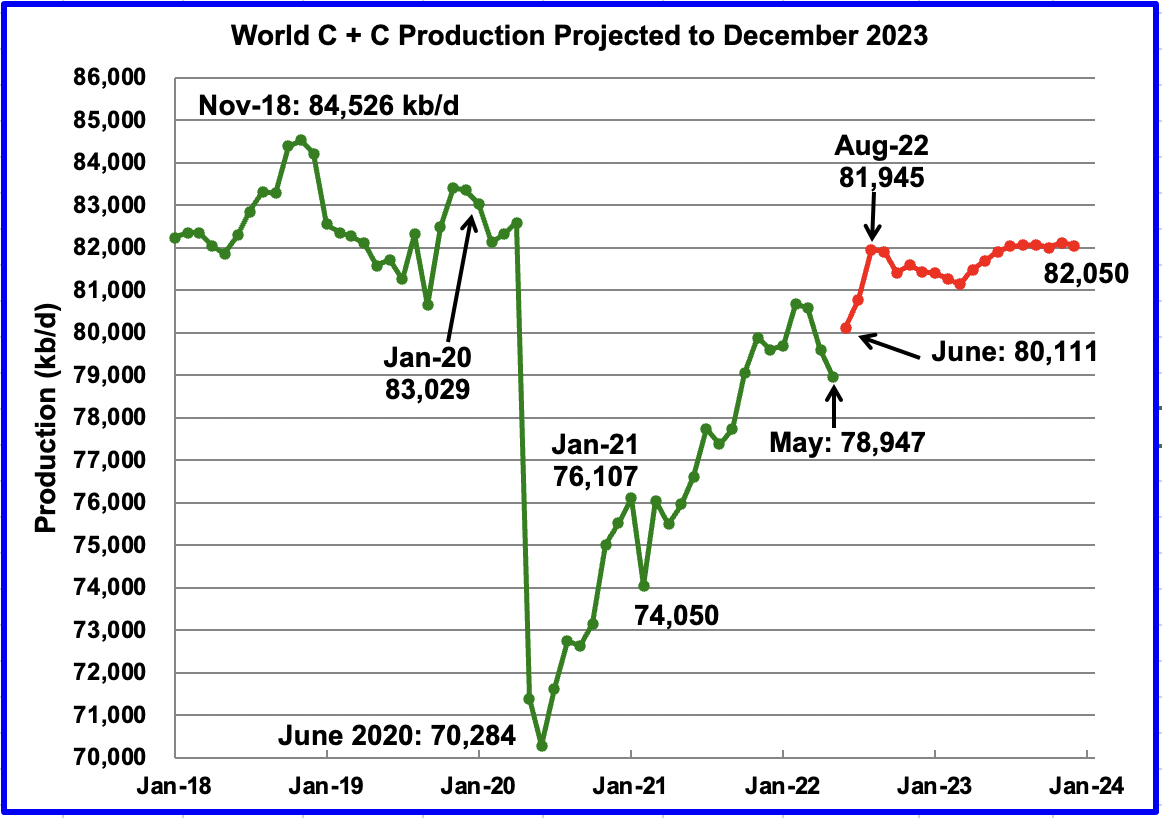In 1998 there appeared an article in
Scientific American titled
The End of Cheap Oil, by two experienced oil geologists
, Colin Campbell (now 91 years old and still alive) and
Jean Laherrére (also 91 years old and also still alive). It was a very remarkable article, because it sparked a whole global movement, the Peak Oil Movement, in which I am a very interested and devoted participant. The conclusion of the paper in Scientific American was presented with the following words:
"From an economic perspective, when the world runs completely out of oil is ... not directly relevant: what matters is when production begins to taper off. Beyond that point, prices will rise unless demand declines commensurately. Using several different techniques to estimate the current reserves of conventional oil and the amount still left to be discovered, we conclude that the decline will begin before 2010."
* * *
The name Peak Oil was coined by Colin Campbell and our own Swedish Peak Oil professor
Kjell Aleklett (b. 1945), who came almost from the next generation of Peak Oil scientists.
But the very first pioneer of the Peak Oil movement, appearing long before the movement itself started, was
Marion King Hubbert (1903 –1989) from USA, who was already dead and buried when the aforementioned legendary article in Scientific American appeared, and never got to see the full fruit of his work.
But now to the topic of this blogpost:
Please study this chart by Colin Campbell from the article "
Peak Oil introduction" on the blog "La Visions" on June 1, 2008:
And then study this chart by Jean Laherrére from the article "
Global Peak" on the blog "Crude Oil Peak" from
March 2015:
So according to Colin Campbell world oil production, all fossil liquids counted, should have began to decline around 2010 at almost 31 billion barrels per year, and according to Jean Laherrére began to decline around 2012, at around 84-84 million barrels per day.
These two charts also includes all fossil liquids. I do not find (when I google for it) newer similar charts which include all fossil liquids (which is very strange and remarkable, shouldn't that kind of information be highly prioritized?), but I can add that oil production in the world as of April 2022 fell to 98.1 million barrels per day, after having exceeded 100 million barrels per day in November 2018 (it reached about 102 million barrels per day at that time, see a chart of all fossil liquids consumption between August 2019 and August 2023
here)
Then study these two charts from the blog
Peak Oil Barrel (charts which do not count all fossil liquids, which is a pity, their charts are the most updated ones you find on the internet. The folks at that blog are very bad at accounting for what oil and liquids they count in their charts. They should always add that to their charts):
So Colin Campbell missed the mark by 8 years (in 2018 the world oil production peaked, and produced then around 36 billion barrels per year), and Jean Laherrére by 6 years, in their predictions. How could they fail by so many years?
Answer: Were it not for the scandal of the
fracking oil industry, all fossil liquids (which I think are what Campbell and Laherrére accounted for in their charts from 2008/2013) could have peaked around 2010-2012, but Campbell and Laherrére could not imagine such a stupidity like the fracking industry, I think, it never making any money, burning through massive amounts of investment money just to keep oil industry from collapsing, civilization thus eating itself alive, cannibalizing itself. I think Campbell and Laherrére thought that's meaningless, thinking that we should prepare ourself for collapse instead, invest in collapse preparation instead, and mitigate climate change instead of throwing all our money at keeping the oil industry, a dead man walking, alive.
So Campbell and Laherrére were not as dumb as it seems, a gigantic bubble has kept the oil industry afloat, and they could not foresee it. But missing the mark by 8 and 6 years is not very bad anyway, when remembering that the oil industry is 163 years old, beginning with
the first commercial oil well near Titusville, Pennsylvania.
Marion King Hubbert also missed the mark by 5 years, when he predicted that the world conventional oil production peak would arrive around the year 2000 (see article about it
here, which calculates that we reached the peak 2004). It was not much, considering that he made the prediction 1956. He also could not foresee the fracking disaster.
* * *
On the website http://worldometers.info there is a
countdown machine which counts how much oil we have left in our reserves, globally. They use official data, probably from IEA and BP Statistical Review, when the reality likely is that the reserves are overstated by half, so according to Ron Patterson at Peak Oil Barrel, in an article at OilPrice.com,
here.
![[peak-oil-800.gif]](https://1.bp.blogspot.com/_2v96do7dhfY/SDtLY_E0XII/AAAAAAAAAbc/BJWVxOqZHbg/s1600/peak-oil-800.gif)





![[peak-oil-800.gif]](https://1.bp.blogspot.com/_2v96do7dhfY/SDtLY_E0XII/AAAAAAAAAbc/BJWVxOqZHbg/s1600/peak-oil-800.gif)





